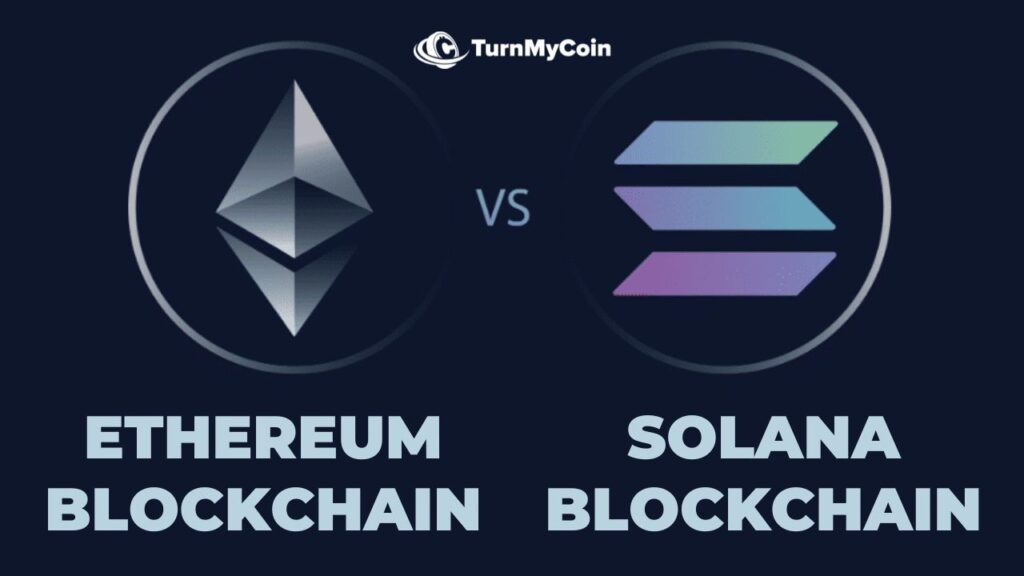Last updated on May 21st, 2024 at 11:03 am
Introduction
The cryptocurrency field has only been around for a little more than a decade and is still in its early phases, and it is expanding rapidly. This sector began around 13 years ago with the introduction of Bitcoin, the first decentralized blockchain ledger. Every week, dozens of new blockchain-based projects are launched.
With so many possibilities, crypto consumers and investors are frequently perplexed as to which project to trust. Because they are all attempting to solve the same problems, smart contracts-compatible blockchain initiatives such as Ethereum and Solana are more prone to confusion.
This post will compare many aspects of Ethereum Blockchain Vs Solana Blockchain to show their differences and similarities.
- What is Ethereum?
- What is Solana?
- Ethereum Blockchain Vs Solana Blockchain on the Basis of Various Factors
- 1. Ethereum Blockchain Vs Solana Blockchain – Decentralization
- 2. Ethereum Blockchain Vs Solana Blockchain – Consensus mechanism
- 3. Ethereum Blockchain Vs Solana Blockchain – Block time
- 4. Ethereum Blockchain Vs Solana Blockchain – Gas fee
- 5. Ethereum Blockchain Vs Solana Blockchain – Transaction speed
- 6. Ethereum Blockchain Vs Solana Blockchain – Scalability
- 7. Ethereum Blockchain Vs Solana Blockchain – Security
- 8. Ethereum Blockchain Vs Solana Blockchain – Transparency
- 9. Future of Solana and Ethereum Blockchains
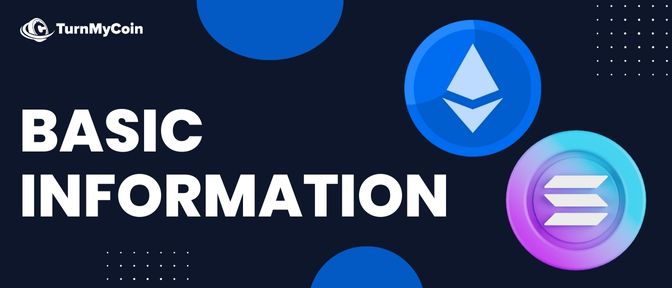
What is Ethereum?
When Buterin initially outlined Ethereum in a whitepaper in November 2013, the project was formally introduced. At the age of 17, Vitalik Buterin began working in the bitcoin industry. He co-founded Bitcoin Magazine in 2012, the first significant publication devoted to cryptocurrencies and blockchains.
Up until the early 2010s, the main goal of blockchain technology was to create a decentralized financial system that could operate without the involvement of centralized organizations like banks.
He desired a blockchain that served as both a decentralised financial network and a software development framework. Buterin was the first to propose a scripting language for Bitcoin application development. After his proposal was rejected, he chose to pursue the concept of a new blockchain with a programming language, i.e., Ethereum.
Ethereum was introduced during the North American Bitcoin Conference in January 2014. The software development began with a Swiss business called Ethereum Switzerland GmbH. However, the Ethereum Foundation, a Swiss non-profit organisation, subsequently took over the program’s development.
The program was crowdfunded through an initial coin offering (ICO) in August 2014. During the sale, investors may purchase Ether tokens in exchange for Bitcoin tokens. During the first 12 hours, the team sold approximately 7 million Ether.
Throughout the ICO, a total of 50 million Ether were sold at the cost of $0.32 tokens per sale, raising a total of $16 million for the growth of Ethereum.
On July 30, 2015, the Ethereum network was officially released. This blockchain’s primary functions were to support P2P transactions through mining and to run smart contracts. Smart contracts integration enabled programmers to create decentralised applications on the Ethereum network.
Since its inception, the blockchain has undergone numerous fundamental changes and hard forks.
What is Solana?
Anatoly Yakavenko, a Russian computer scientist, built Solana. It became official when he published the Solana Whitepaper in 2017. Yakavenko held positions at Qualcomm for 13 years before creating Solana.
He was instrumental in the development of distributed systems at Mesosphere and Dropbox. Eric Williams and Greg Fitzgerald, both former colleagues of Yakovenko at Qualcomm and Dropbox, have also joined him in the creation of the Solana blockchain.
Solana was created to address the blockchain industry’s scalability issue. Prior to Solana, most prominent blockchains had difficulty processing a high number of transactions in a short amount of time.
Bitcoin, for instance, the most popular and widely used blockchain, can only execute seven transactions per second. During this time, even Ethereum, a second-generation ledger, can only verify up to 30 transactions.
In comparison, centralized banking platforms like Visa can process up to 24,000 transactions per second. To be as efficient as a centralized financial system, cryptocurrencies must become as strong as payment systems.
Yakavenko suggested that incorporating an “internal clock” into blockchain protocols could alleviate the scalability issue. This would significantly cut the time required to process transactions while maintaining the network’s decentralisation characteristic.
For the Solana blockchain, he devised a hybrid consensus model that combines Proof-of-Stake (PoS) with Proof of History (PoH).
Solana’s development is overseen by the Solana Foundation, a non-profit organisation based in Switzerland. Solana Labs, a software business based in the United States, created the core software technology for the Solana project.
Between 2017 and 2020, the project raised approximately $25 million through different ICOs. It raised almost $340 million in 2021 through several crypto capital operations.
Though the program is still in beta, the Solana mainnet went live in March 2020. Solana is also a wise contracts-compatible blockchain, which implies that programmers may create apps for it.
This is one of the reasons why the project is sometimes referred to as an Ethereum Killer.
Ethereum Blockchain Vs Solana Blockchain on the Basis of Various Factors
1. Ethereum Blockchain Vs Solana Blockchain – Decentralization
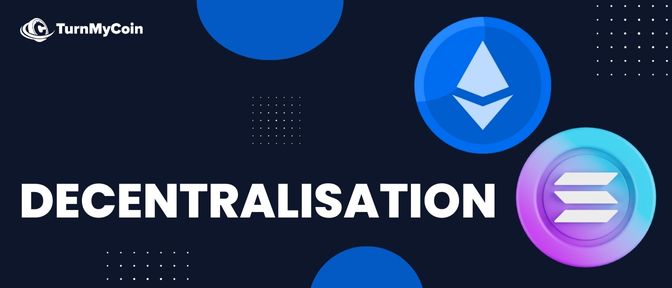
Decentralization is a key idea in blockchain technology. The blockchain aims to deviate from systems in which one person or group has significant influence over the system. This prevents misuse of authority, boosts resilience, and provides additional benefits when compared to Solana vs Ethereum.
When it pertains to Solana vs Ethereum, most people seem to believe that Ethereum is more decentralised than Solana.
In the SOL versus ETH comparison, the top 50 validators control more than 35% of the total stake. Everstake, the largest validator, has more stake than the other half of the network’s verifiers combined.
2. Ethereum Blockchain Vs Solana Blockchain – Consensus mechanism
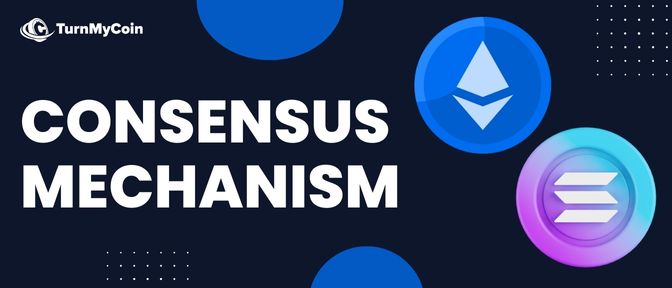
Distributed nodes in a blockchain establish an agreement on a given network configuration using a consensus technique, preventing flaws. These algorithms ensure that all nodes are in sync and that all transactions are genuine and recorded on the blockchain.
Consensus is the key difference between the Solana and Ethereum blockchains. Solana contains a hybrid of Proof-of-Stake(PoS) and Proof-of-History (PoH) mechanism, which entails a set of computer operations that cryptographically prove the chronological distance between two events.
However, unlike Solana, the Ether blockchain still employs a Proof-of-Work method. Though sometime back Ethereum Blockchain has shifted to Proof-of-Stake consensus mechanism.
Distributed nodes in a blockchain establish an agreement on a given network configuration using a consensus technique, preventing flaws. These algorithms ensure that all nodes are in sync and that all transactions are genuine and recorded on the blockchain.
3. Ethereum Blockchain Vs Solana Blockchain – Block time
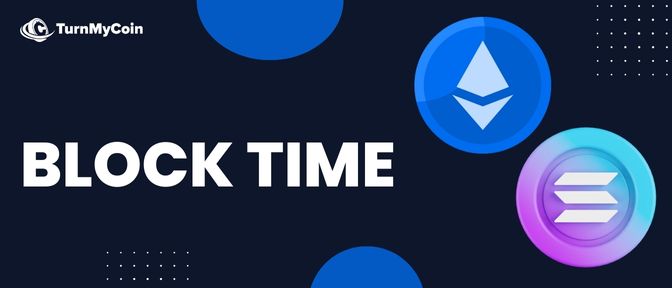
In his comparison of SOL and ETH, Solana uses the term “block” to refer to the succession of entries on which validators must agree in order to receive confirmation. You can use this way to compare block-based systems with Solana’s confirmation times. Solana is all about speed, with 400 millisecond block timings.
As hardware improves, so does the network. Block time in Solana vs Ethereum indicates that Solana’s implementation is currently set at 800ms. The Ether blockchain’s typical block duration is between 12 and 14 seconds. In terms of speed and reliability, Solana’s Proof of History marks a significant leap in the architecture of several blockchains in the Solana vs Ethereum argument.
4. Ethereum Blockchain Vs Solana Blockchain – Gas fee
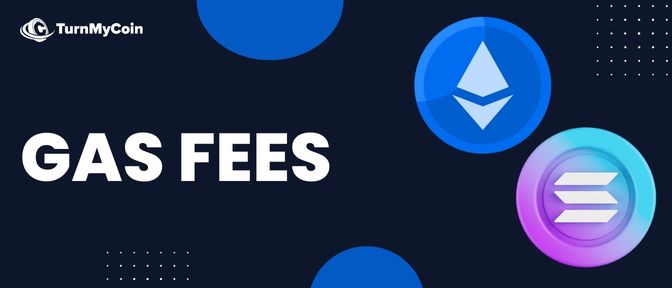
A user incurs transaction expenses while sending crypto currencies from one wallet to another. As in Solana vs Ethereum, you must pay a predetermined fee before a transaction can begin or the Blockchain registers it.
Depending on the complexity of the program, the cost of maintaining a blockchain application could vary from 15% to 25% of the total project cost. This is critical since many people dislike paying transaction fees when utilising the Solana and Ethereum blockchains. People are also excited about Solana’s minimal transaction fees.
In the Solana vs. Ethereum comparison we found that Ethereum costs significantly more for each transaction. Despite the fact that, when compared to ETH, the Solana blockchain is still in its infancy, the ecosystem is growing. The number of users on Solana appears to increase whenever Ethereum’s gas fees appear to increase.
5. Ethereum Blockchain Vs Solana Blockchain – Transaction speed
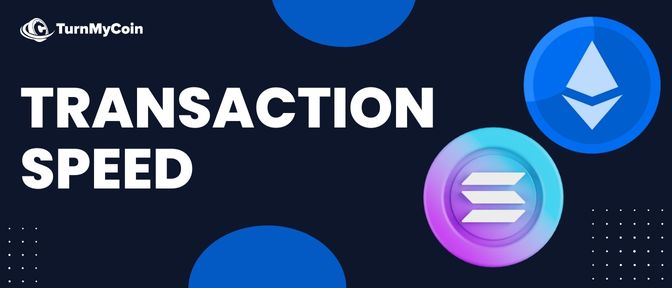
Solana’s rapidity is quite appreciated among bitcoin speculators. In the SOL vs ETH dispute, Solana can handle 65,000 transactions per second, while Ethereum can only process 30.
In reality, Solana is benefiting from Ethereum’s slower network. To achieve such quick transaction rates, Solana employs a centralised network, however as previously stated, this network offers a considerable risk to its customers.
The Solana network’s Tower Byzantine fault-tolerant (BFT) architecture eliminates the need for nodes to engage with one another in real-time, resulting in enhanced efficiency. Currently, the Solana network can process approximately 50,000 transactions per second (TPS).
6. Ethereum Blockchain Vs Solana Blockchain – Scalability
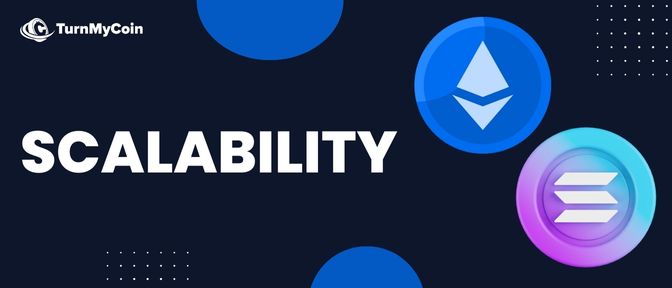
Solana has a history of having improved scalability when compared to Ethereum. Because the Solana network is developed for scalability, layer-two solutions are not required. The basic technology of the Solana network breaks data into smaller pieces, making network transfers simple.
The Solana blockchain network is established when GPUs and SSDs collaborate to achieve an advantage over SOL vs ETH. Sealevel, another technology, facilitates the processing of transactions between these two types of storage.
One of the primary difficulties with the Ether blockchain network, which can process 15 transactions per second, is scalability. Gas prices continue to grow as more developers construct decentralised apps on the network and the volume of transactions increases. These factors favour Solana in the Solana vs Ethereum argument.
7. Ethereum Blockchain Vs Solana Blockchain – Security
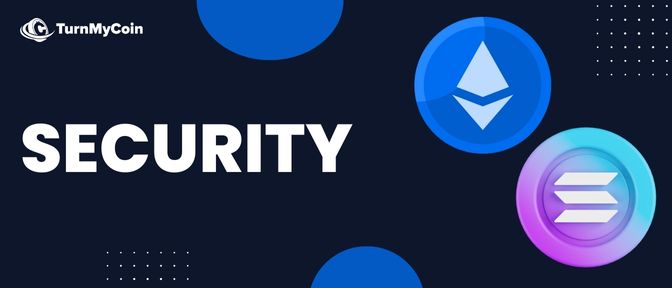
Solana was announced in March 2020, however, the Ether blockchain has been around since July 2015. In the discussion between Solana and Ethereum, Ethereum has far more active users and runs far more decentralised apps. Ethereum can be used to conduct transactions on the most dependable blockchain.
Recently, Solana wallets were hacked of millions of dollars. So, as far as present status of Security is concerned my bias is certainly towards Ethereum.
8. Ethereum Blockchain Vs Solana Blockchain – Transparency
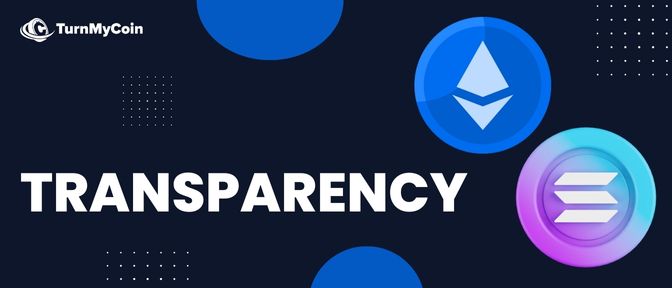
The vast majority of blockchain networks rely only on open-source code. Its code is accessible to anyone. This allows auditors to assess the security of blockchains for cryptocurrencies such as Bitcoin, Solana, and Ethereum.
Solana struggles to provide proper transparency regarding its developers in comparison to Ethereum, regardless of the fact that Ethereum has a large team of developers.
Because Ethereum has existed since 2015 and Solana has only been available since 2020, the Ether blockchain comes out on top in the SOL vs ETH comparison. Furthermore, in the context of SOL vs ETH, Ethereum values higher transparency than Solana.
9. Future of Solana and Ethereum Blockchains

According to the research on Solana pricing from previous years, the blockchain platform’s minimum price in 2023 is expected to be around $85.98. When compared to ETH, the price of SOL coins indicates an eagerness to invest.
Ethereum is a popular alternative currency for Bitcoin, with a high value for both investors and enthusiasts. Experts predict that its value will climb by more than 400% by 2022. Since its debut, Ether has experienced an enormous value rise in the Solana vs Ethereum battle.
The fact that Solana vs Ethereum is a current argument could have major consequences. According to experts, Ethereum’s position will remain dominant if it operates on a consistent basis without facing a major technical fault or administration-related mismanagement. You can’t imagine deleting it because so many people rely on it.
However, this does not rule out the possibility of alternative blockchain platforms challenging Ethereum in the future. Solana is now one of the underdogs attempting to topple Ethereum’s supremacy. Solana has an early lead over Ethereum because of technological brilliance, astute relationships, and a consistent vision.
Conclusion
In the end, your usage will determine which blockchain is better. Solana is a better choice if all you need is a quick platform. But it’s difficult to beat Ethereum if you want a project that is already well-established and has a huge future potential.
